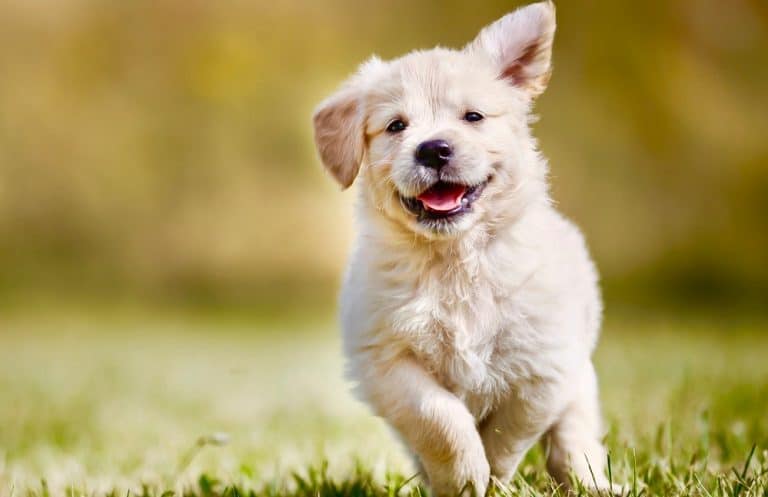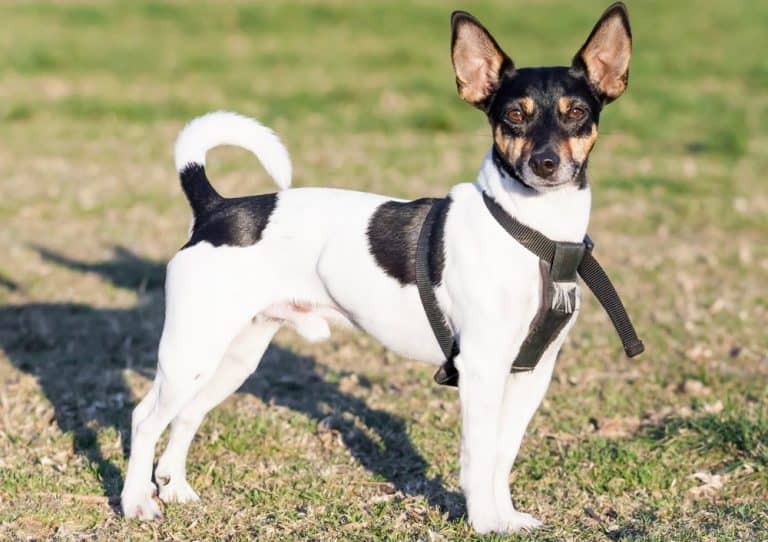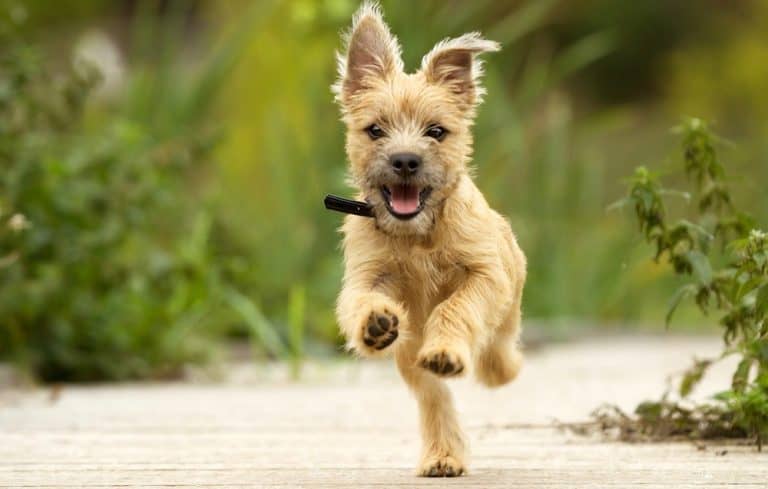My Dog Scraped His Nose – Will It Turn Black Again?
The tissue that makes up your dog’s nose is soft and delicate. It is also known as ‘leather’.
Therefore, it does not take much for the surface skin cells of the nose to be scratched against a fence, on the ground, or even in a crate.
When this happens, you may be wondering ‘my dog scraped his nose will it turn black again?’
Thankfully, yes. Most dog noses that have been scraped heal and they eventually turn black again, unless it is a particularly deep puncture or cut.
Since the nose receives plenty supply of blood, the wound will heal quickly, and you do not have to do much to facilitate the process as an owner.
However, this does not mean that your dog’s nose will go back to black immediately. This is because the depigmentation of the skin cells will lead to a temporary white or pink spot in the scraped area.
But your dog’s nose will eventually return to its original color. It may take a few weeks and for some, it may be a few months.
This article will provide you with information on the potential reasons for dog nose scratch, how to prevent them and how to treat any dog nose cuts.
Signs Of A Dog Scraped Nose
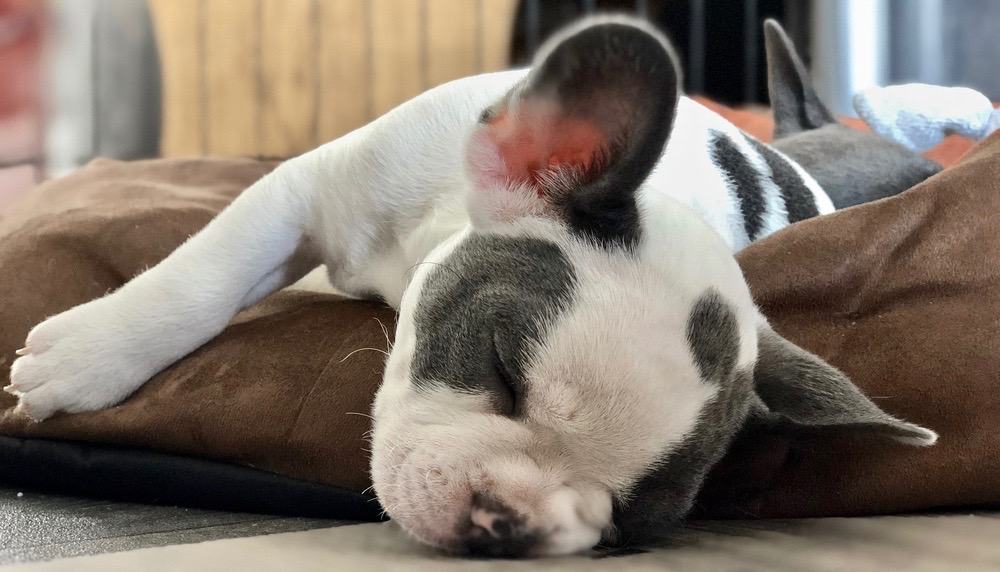
Some dogs may have mild scraped noses which can be hard to identify unless you look too closely. These mild scratches can be treated easily using your dog’s first aid at home.
However, if you see any inflammation, redness, or wound near or on your dog’s nose, it means that they have scratched it badly and it will have major consequences.
Why Is My Dog’s Nose Scraped
Dogs use their sense of smell to perceive the world. That is why their muzzle is the most exposed part of their body.
Whether they are socializing, finding food remains in the soil, or looking for prey, their nose is always in the conflict zone and may end up with a scrape.
The main reason why your dog may end up with a scrape is through scratching. The following are the reasons why your dog is scratching their nose:
#1. Allergies That Lead to an Itchy Nose
During the spring season, most animals experience allergic reactions including dogs, but this can happen any time of the year.
Scratching can lead to secondary injuries such as wounds and corneal ulcers which are susceptible to injuries. If you think your dog is scratching their nose because of allergies, take them to the vet for diagnosis.
The main causes of allergic reactions are:
Pollen Allergy
If this is the reason, the itching will be accompanied by nasal discharge, sneezing, conjunctivitis, and inflammation of the eyelids. This can be severe because your dog has come in close contact with an allergen.
You should intervene with a therapy based on corticosteroids to eliminate the itchiness as well as keep your dog away from places with lawns that have lots of grass after the cut.
Dust Mite Allergy
Dogs are constantly rubbing or scratching their face on the ground if they have allergic reactions to dust mites. Corticosteroids are effective if you give them to your dog during the early stages of the allergic reaction.
With dust mite allergies, you will notice that your dog does not scratch their nose when they are outdoors but scratch it when they come back indoors.
Contact Allergy
This is where your dog is allergic to the materials that their feeder, toys, or drinker is made of. Since their nose is in proximity with these items, it is mostly affected, and scratching is inevitable. Wounds and redness may show on the nose.
#2. Dog Skin Diseases
The muzzle area of your dog has two important points: the union between the skin of the lips and the oral mucosa as well as the union between the skin of the nasal spectrum and the mucosa of the nose.
These two transition points can be easily affected by a few dermatological problems that may cause itching. They include:
Sunburns
Your dog’s nose is exposed to the sun and in summer they easily burn which causes discomfort in your dog. Your dog will then rub their nose against a surface or scratch it.

You can prevent this by applying emollients and regenerating cream that has Vitamin A, zinc, or aloe vera.
Pemphigoid and Pemphigus
These conditions occur when the body attacks itself because of an immune issue. In most cases, an external issue causes the antibodies to form against the skin without an internal process.
You will then notice that your dog is scratching their nose causing erythema, flaking, and formation of blisters.
The lesions are easily recognizable and if they are contaminated by bacteria, they become moist. To treat this, your vet may administer antibiotics or immunosuppressants. You should also avoid sun exposure for your dog.
Others Skin Diseases
Juvenile cellulitis affects puppies and causes pain which makes them scratch their nose. Dermatophytosis is a condition caused by fungi and it stimulates scratching. Juvenile acne causes itching if it is contaminated.
#3. Caterpillars and Foreign Bodies
Dogs are exposed to different varieties of caterpillars especially during the spring and summer seasons.
If a caterpillar stings your dog’s nose and tongue, they can be injured terribly. Some species of caterpillars irritate your dog’s nose which makes your dog sneeze and potentially scratches it.
Monitoring the areas where this happens to your dog and avoiding them is the best way to prevent scratching from happening.
#4. Other Infrequent Causes
Other rare causes may make your dog scratch their nose. If your dog is experiencing disturbances in their sinuses, they may scratch their nose continuously or have abnormal discharges like blood.
Apart from scratching other reasons may cause your dog to end up with a scrape on their nose. They include:
- Playing with other dogs at the park, home, or dog daycare.
- Rubbing nose against metal crate or fence due to separation anxiety.
- Excessive licking of the nose during winter causes the skin layers to come off.
- Digging around among rocks and dirt.
- Trying to relieve the pain inside the nose caused by a trapped object, bug bites, or physical trauma.
How To Prevent A Dog From Rubbing Its Nose
If your dog’s scraped nose is self-inflicted, the best way to prevent it from happening in the future is to deal with the root cause directly as explained below:
If the scraping is because of an allergic reaction or environmental factors, switch your dog’s food and regularly wash the carpets and beddings.
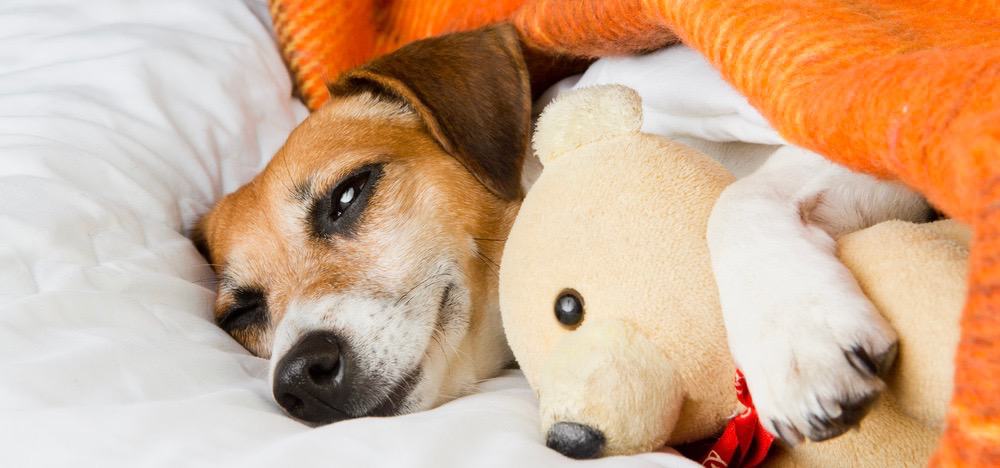
You can use flea collars and treatments to prevent insect bites.
Apply moisturizing items like Vitamin E oil and aloe vera to prevent your do’s nose from dying especially in the winter.
If the scrape is due to separation anxiety or OCD, speak to your vet or a dog behaviorist to help you.
Treating A Scrape On A Dog’s Nose?
It requires a special level of attention if your dog has scraped their nose because you do not want the problem to be exacerbated.
Below is a step-by-step guide on how you can treat a scrape on your dog’s nose. However, if your dog has been bitten you should take them to the vet immediately because they could become infected with bacteria, which can be dangerous.
Step One: Do Not Panic
Probably your dog is not pleased with the pain that their nose is causing them, and panicking will only cloud your judgment and the ability to treat the wound properly. Take a few deep breaths or do any exercise to calm you down.
This way your calmness will extend to your dog, and they will be ready to be treated without any issues.
Step Two: Examine the Damage
Not all the cuts are the same. Is it a deep cut or a scrape? Is it bleeding? To examine the wound properly, you need to keep your dog in one spot either by having a friend hold them in place or tethering their leash to a tree.
If the wound is bleeding, you need to start step three immediately.
If you are not sure whether the bites on your dog’s nose are caused by a neighbor’s cat or dog, the differences are noticeable between the injuries caused by a dog’s bite and a cat’s bite.
A cat’s bite is deeper, and your dog may not bleed excessively while a dog’s bite leads to surface-level wounds with blood.
Step Three: Stop the Bleeding
Stopping the bleeding should be a priority when it comes to wound that continue bleeding. It is a good idea to have gauze for this step as it helps with absorbing the blood and encouraging the clotting process.
Therefore, always keep a dog’s first aid kit and bring it with you on walks or keep it in the truck. While gauze is useful, you can also use a napkin or a washcloth. Whatever item you choose to use, apply gentle and even pressure on the wound.
If the bleeding does not stop with one layer of gauze, do not replace it but add more layers on top. Removing the first layer can reopen the wound and cause more bleeding.
If the bleeding does not stop after five minutes, take your dog to the vet immediately as the cut could be too deep for it to be treated at home.
Step Four: Clean the Wound
A wound that may not look serious should be given the same cleaning level as a severe one. Scratches and cuts are a breach for bacteria to go into the bloodstream and cause infections, which can be dangerous especially if the wound was caused by a bite.
Gently wipe the cut clean using either betadine or povidone-iodine, then dab antibiotics over the wound. Ensure that you apply a small amount because your dog will try to lick it away when he senses something on the nose.
While you can use antibiotics from your medicine cabinet such as Neosporin, you should use medications that are safe for the dog as some human drugs can cause mild stomach issues in your dog.
To keep the wound continually clean, apply the ointments all day long because dogs naturally lick their noses to moisturize them.
Keep your dog from licking their nose during the recovery period because their tongue is surrounded by all types of bacteria that can cause a risk of infection.
Note: Do not use hydrogen peroxide to clean the wound even though it is a well-known wound-cleanser for humans. This is because hydrogen peroxide foams which is a sign of it destroying the fibroblasts in the body which then delays the natural recovery of your dog.
Step Five: Check Up on The Nose Continuously
It can be painful to properly bandage cuts around your dog’s nose, therefore, you should check up on it for several days after the cut.
Also, check if there are any potential signs of infections such as swelling or pus. Visiting the vet is recommended if the wound does not show any signs of improvement.
Trim any long hair that is around the nose to reduce contaminating the wound. If your dog continues to scratch the injury, you may need to use a conical collar around their neck to stop them.
Will The Nose Of My Dog Turn Black Again?
Yes. In case of a minor scratch, any lost pigmentation will return after a while. This is how it happens:
- A minor scratch occurs.
- The scratch lasts a day or two forming a scab.
- The scab falls and leaves the area healed but with light pigmentation.
- Over some weeks or months, the skin gradually darkens.
In some cases, the bruise on the nose does not return to its original color. For example, if the wound is so deep or severe, the depigmentation is permanent, and the skin loses the ability to recover fully.
Sometimes your dog may push the housemate to their limit, leading to a deep cut on the nasal flesh.
This will cause bleeding and could result in the recovering area turning greying-white color. The re-pigmentation process sometimes takes a while to run its course.
Younger dogs heal more quickly but the scratch may remain pink or white for months before they fade and become darker. What is important is to keep the dog from reopening the wound.
How Do I Keep My Dogs Nose From Scarring?
The best way to keep your dog’s nose from scarring is by reducing infection to the injury or further potential occurrence of trauma.
You can achieve this through:
- Monitor the daily activities of your dog diligently.
- Letting your dog wear the cone-shaped E-collar.
- Applying and reapplying ointments and topical antibiotics.
- Use Vaseline, Vitamin E, or Aloe Vera to facilitate retention of moisture.
For quicker healing of the wound, prevent it from being reopened. Keep an eye on the nose leather in cases of any abnormalities in the texture.
Check if the scrape becomes ulcerated or crusty. If you see this, take your dog to the vet immediately for treatment or close examination because they could be symptoms of autoimmune diseases, skin disease, fungal or bacterial infections.
How Long Does It Take To Heal A Kennel Nose?
A kennel nose is a raw red spot on the top side of your dog’s nose that they have when they come home after staying at the boarding facility.
Your dog may end up with this injury when they are attempting to hide their food under the blanket and they can bruise their nose causing injuries.
Some dogs hurt their noses when they are attempting to chew at the fences or doors of their enclosed places due to separation anxiety.
A kennel nose may be shallow and it can recover without any lasting signs of damage. It should take about a week or two for a kennel nose to heal. If the nose’s black leather was injured, it may take some months for full re-pigmentation.
How To Treat A Kennel Nose
Kennel nose is like a superficial graze and sometimes you may need not do anything but let it heal on its own. However, you may need to clean it up by washing it with water and antibacterial soap.
Apply a topical antibiotic like Neosporin, for the next week to keep the wound free of bacteria and clean. When the skin has healed, apply natural options like Aloe Vera and Vitamin E to moisturize the area during the pigment recovery state.
The only difference with kennel nose is that; there are a few additional strategies to reduce the possibility of it happening again. Anxiety-derived behaviors usually are the causes of kennel nose; therefore, it is crucial to reduce fear and stress in your dog as much as possible.
The following are ways to prevent kennel nose:
- Give your dog the anti-anxiety medication as instructed by the vet.
- Pack your dog’s favorite blanket, beddings, toys, and treats for the stay
- Give your dog anti-anxiety chews
- Use the OTC anti-anxiety sprays
- Let your dog wear the ‘Dog Appeasing Pheromones’ (DAP).
- Take your dog to a local dog club or park to get used to socializing with other dogs.
- Give your dog an anti-anxiety material like a thunder shirt to wear.
- Separate your pet from you by taking them to doggy daycare a few times to allow them to learn that sometimes they can be by themselves for a while.
- If you still cannot make your dog stay safe and calm, you can alternatively get the boarding service brought to you as a pet sitter. Most dogs feel nervous whenever they are in a strange environment. Therefore, staying in their own home when you are not around will make them at ease.
Final Words
If your dog has accidentally scraped his nose either by playing with other dogs, digging dirt, scratching, or due to bites, be assured that in most cases the color will turn black again.
The scrape may be a bit grey, white, or pick for a while but eventually, the pigmentation will come back, and your dog will have their normal black nose in no time.
However, the nose may not turn black again in cases of scarring because of repeated trauma or if the scrape is too deep, or if there is subsequent infection.
Ensure that you clean, disinfect, and continuously moisturize the scratch to increase the speed of recovery.

